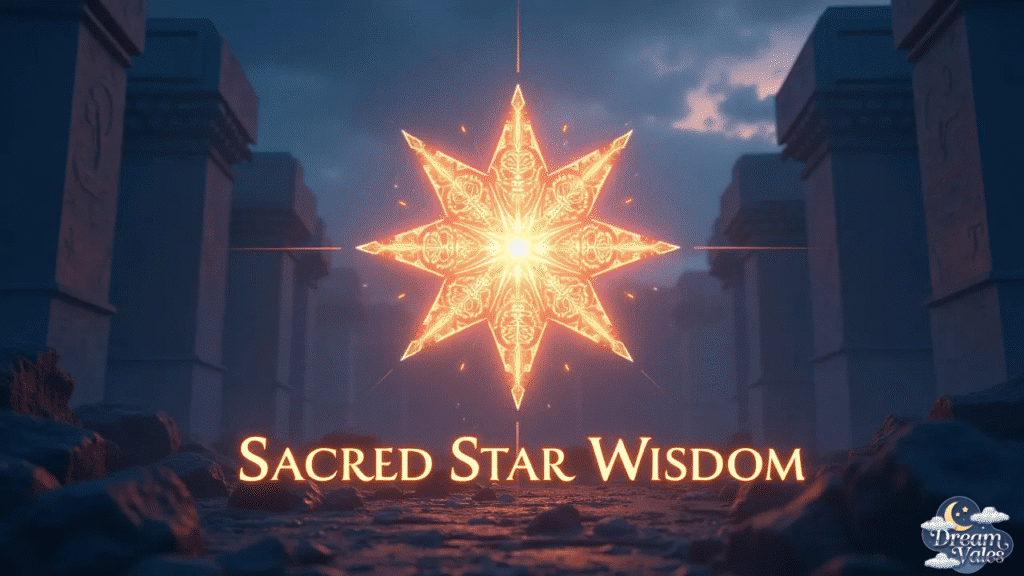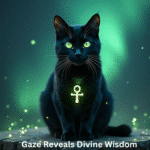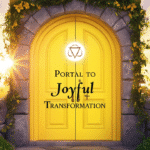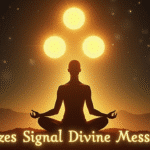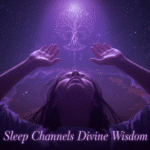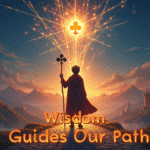You’ve seen it everywhere – from ancient cave paintings to modern jewelry designs. The 4 pointed star appears across cultures, continents, and centuries with remarkable consistency.
The 4 pointed star symbolizes balance and harmony, connecting us to the four cardinal directions, elements, and cycles of life. It offers a path to spiritual integration and wholeness for modern seekers.
This sacred symbol carries profound spiritual meaning that transcends religious boundaries. Unlike its more famous five-pointed cousin, the four point star represents fundamental aspects of human existence that speak to our deepest spiritual needs.
Why the 4 Pointed Star Captivates Seekers
The four-pointed star operates on multiple levels of consciousness simultaneously. While other symbols might focus on transcendence or earthly matters, this emblem bridges both realms perfectly.
Modern spiritual seekers gravitate toward the 4 point star meaning because it offers practical wisdom without overwhelming complexity. You don’t need years of study to understand its core message – yet it rewards deeper investigation with layers of insight.
The symbol’s power lies in its representation of balance through the number four. This creates natural stability that resonates with our psychological need for order and understanding.
Ancient Origins Where the 4 Pointed Star First Appeared
Archaeological evidence reveals the four-pointed star appearing in Mesopotamian clay tablets dating back 4,000 years. These early astronomers used the symbol to mark celestial events and seasonal changes that governed agricultural cycles.
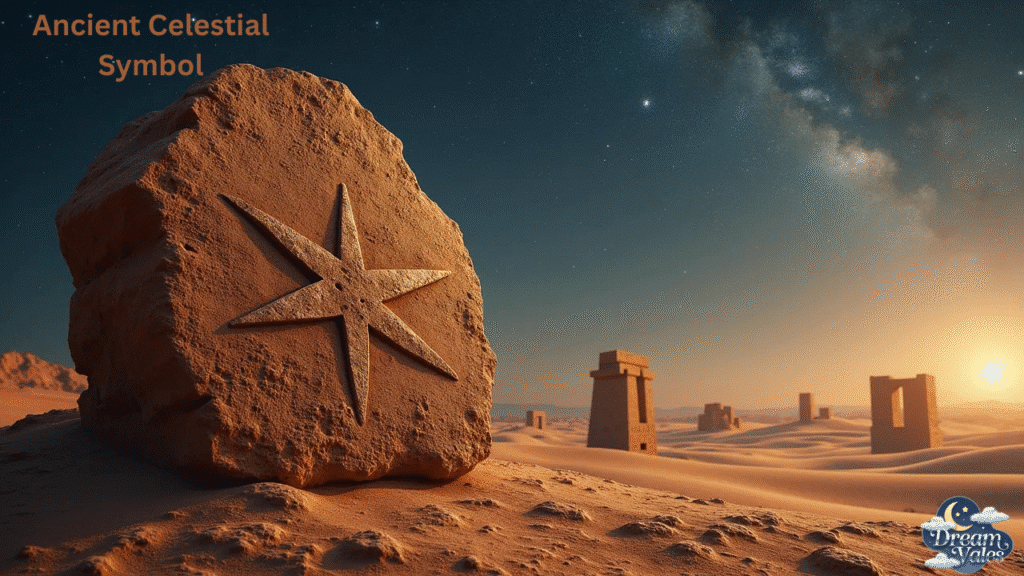
Native American tribes independently developed similar four-pointed designs in their medicine wheels. These sacred circles divided space into four directions, each associated with specific animals, colors, and spiritual teachings.
Celtic druids carved four-pointed stars into stone monuments across Ireland and Scotland. These markings predated Christian influence by centuries, suggesting the symbol held deep significance in pre-Christian European spirituality.
| Ancient Civilization | Time Period | Usage |
|---|---|---|
| Mesopotamian 🏺 | 2000 BCE | Astronomical calendars |
| Native American 🦅 | 1000 BCE | Medicine wheels |
| Celtic 🍀 | 500 BCE | Sacred stone carvings |
| Egyptian 🔺 | 1500 BCE | Pyramid alignments |
| Chinese 🐉 | 800 BCE | Directional markers |
| Mayan 🌞 | 300 CE | Temple orientations |
| Hindu 🕉️ | 1000 BCE | Mandala designs |
| Buddhist ☸️ | 400 BCE | Meditation symbols |
Archaeological discoveries in Peru reveal four-pointed star patterns in textiles from 800 CE. These South American civilizations had no contact with Old World cultures, yet developed identical symbolic meanings.
The consistency of 4 pointed star symbolism across isolated cultures suggests deep psychological resonance. This pattern emerges naturally when humans seek to organize their understanding of physical and spiritual reality.
Core Symbolic Meanings The Four Sacred Elements
The 4 pointed star spiritual meaning centers on four fundamental aspects of existence. These aren’t abstract concepts but lived experiences that shape every moment of your daily life.
Cardinal directions form the first layer of meaning. North represents wisdom and introspection, while South embodies passion and growth.
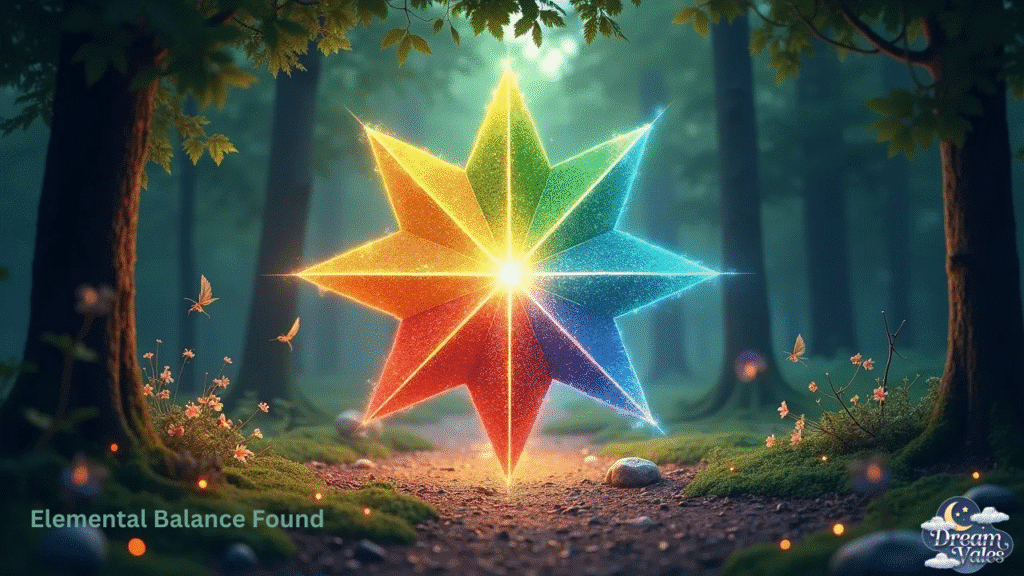
East brings new beginnings and enlightenment, whereas West offers completion and release. These directional correspondences create a framework for understanding life’s cyclical nature and personal development.
Classical elements provide another interpretive framework. Earth grounds you in physical reality and practical matters.
Air represents thought, communication, and intellectual pursuits that expand your understanding. Fire symbolizes transformation, passion, and the driving force behind personal change.
Water flows through emotion, intuition, and the subconscious depths of spiritual experience. These elemental associations help practitioners connect with natural forces and internal energies.
| Element | Direction | Spiritual Quality |
|---|---|---|
| Earth 🌍 | North | Stability, grounding |
| Air 💨 | East | Wisdom, new beginnings |
| Fire 🔥 | South | Passion, transformation |
| Water 💧 | West | Emotion, intuition |
| Spirit ✨ | Center | Divine connection |
| Mind 🧠 | Above | Higher consciousness |
| Body 🏃 | Below | Physical manifestation |
| Soul 👻 | Within | Inner knowing |
Life cycles represent the third symbolic layer. Birth initiates the journey, followed by growth that expands possibilities.
Death transforms what no longer serves, while rebirth creates fresh opportunities for spiritual evolution. This cyclical understanding helps practitioners navigate major life transitions with greater acceptance and wisdom.
Human experience integration occurs through mind, body, spirit, and emotion working together. This holistic approach distinguishes the four point star from symbols that emphasize single aspects of existence.
The integration of these four dimensions creates wholeness that many modern people desperately seek. Contemporary life often fragments experience into separate compartments, while the 4 pointed star reminds us of natural unity.
You may also like to read: The Profound Spiritual Meaning of 2 Hawks Circling Above
Cultural Interpretations Across Civilizations
Different cultures developed unique interpretations of four-pointed star symbolism while maintaining core themes. These variations demonstrate the symbol’s flexibility and universal appeal across diverse spiritual traditions.
Native American Traditions
Native American four-pointed star symbolism connects directly to the medicine wheel teachings. This sacred circle divides existence into four primary directions, each carrying specific animal spirits and seasonal wisdom.
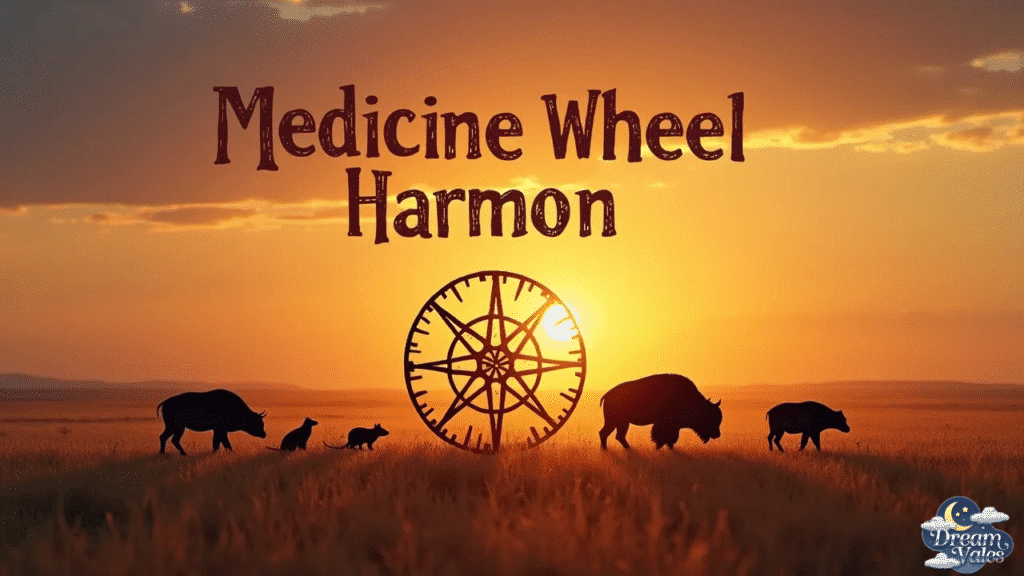
The Lakota people associate the four directions with different life stages. Childhood belongs in the East with the eagle’s perspective, while adulthood moves to the South under the mouse’s attention to detail.
Elder wisdom occupies the West with the bear’s introspection, and the North holds the buffalo’s strength for those who’ve completed life’s circle. These aren’t rigid categories but fluid states of being that shift with circumstances.
| Direction | Animal Spirit | Life Stage |
|---|---|---|
| East 🦅 | Eagle | Childhood wonder |
| South 🐭 | Mouse | Adult responsibility |
| West 🐻 | Bear | Elder wisdom |
| North 🦬 | Buffalo | Spiritual completion |
| Northeast 🦌 | Deer | Gentle strength |
| Southeast 🐺 | Wolf | Pack loyalty |
| Southwest 🐍 | Snake | Transformation |
| Northwest 🦉 | Owl | Hidden knowledge |
Cherokee traditions emphasize the 4 pointed star as a protective symbol. Warriors painted four-pointed designs on shields and weapons to invoke directional spirits’ protection during battle.
These protective qualities extend to modern practitioners who use the symbol in jewelry and home decoration. The four points create energetic boundaries while maintaining openness to beneficial influences.
Hopi ceremonies incorporate four-pointed star patterns in sand paintings and ritual objects. Each direction receives specific offerings and prayers during seasonal celebrations that honor natural cycles.
Eastern Philosophy
Buddhist teachings connect the four-pointed star to the Four Noble Truths. These fundamental insights form the foundation of Buddhist philosophy and provide practical guidance for ending suffering.

The first truth acknowledges suffering’s existence in all life. The second identifies craving and attachment as suffering’s root cause.
The third offers hope through suffering’s cessation, while the fourth provides the Eightfold Path as the method. This four-fold structure mirrors the four point star pattern of balanced understanding leading to liberation.
Hindu philosophy links the four point star meaning to the Purusharthas or life’s four goals. Dharma represents righteous living according to moral principles.
Artha encompasses material prosperity gained through ethical means. Kama includes pleasure and emotional fulfillment in relationships and creative expression.
Moksha represents liberation from the cycle of death and rebirth through spiritual realization. These four goals create balanced human development that honors both worldly and spiritual needs.
| Buddhist Truth | Hindu Goal | Spiritual Focus |
|---|---|---|
| Suffering exists 😔 | Dharma | Moral foundation |
| Craving causes pain 😤 | Artha | Material balance |
| Cessation possible 😌 | Kama | Emotional health |
| Path leads forward 🛤️ | Moksha | Ultimate liberation |
| Mindfulness practice 🧘 | Yoga | Physical discipline |
| Compassion cultivation 💝 | Bhakti | Devotional love |
| Wisdom development 📚 | Jnana | Knowledge seeking |
| Community support 🤝 | Karma | Service to others |
Chinese philosophy incorporates the four-pointed star through the Si Xiang or Four Symbols. These represent the interplay between yin and yang energies in different combinations that create natural phenomena.
Taoist practitioners use four-pointed star patterns in meditation and energy cultivation practices. The symbol helps visualize balanced flow of qi through the body’s energy centers.
If you’re interested, check out: The Spiritual Meaning of a Red Feather
Western Esoteric Traditions
Hermetic principles embrace the four-pointed star as representing the four classical elements in perfect balance. This alchemical symbolism appears throughout Western esoteric traditions from medieval times to modern practice.
Tarot cards reflect this four-fold division through the four suits. Cups correspond to water and emotion, while Wands represent fire and passion.
Swords align with air and thought, whereas Pentacles embody earth and material concerns. Each suit explores different aspects of human experience through its unique elemental lens.
Modern Wiccan traditions use the four point star in ritual circle casting. Each direction receives invocation of its corresponding element and guardian spirit before magical work begins.
The symbol appears in protective amulets and altar arrangements designed to create balanced sacred space. Practitioners place representations of each element at cardinal points to establish energetic harmony.
Golden Dawn magical traditions incorporate four-pointed star symbolism in ceremonial tools and temple layouts. The four directions anchor ritual space while connecting practitioners to elemental forces.
The Shooting Star Phenomenon Movement and Manifestation
Shooting star spiritual significance amplifies the 4 pointed star symbolism through movement and temporal experience. While static four-pointed stars represent stable foundations, shooting stars embody dynamic transformation.
Ancient cultures interpreted shooting stars as messages from divine realms. The temporary nature of these celestial events suggested the importance of recognizing fleeting opportunities for spiritual growth.
Modern astronomy explains shooting stars as meteors burning through Earth’s atmosphere. Yet this scientific understanding doesn’t diminish their spiritual impact for those seeking deeper meaning in natural phenomena.
The shooting star tradition of making wishes connects to the idea that celestial movements create windows of enhanced manifestation. These moments offer heightened spiritual receptivity when intentions align with cosmic energy.
| Culture | Shooting Star Belief | Ritual Practice |
|---|---|---|
| Greek 🏺 | Gods sending messages | Prayers at sighting |
| Roman ⚖️ | Souls ascending | Wishes for deceased |
| Japanese 🌸 | Kami blessings | Written petitions |
| Celtic 🍀 | Fairy magic | Stone circle ceremonies |
| Egyptian 🔺 | Ra’s light | Solar worship |
| Norse ⚡ | Odin’s ravens | Runic divination |
| Aztec 🌞 | Quetzalcoatl’s feathers | Pyramid rituals |
| Aboriginal 🪃 | Ancestor spirits | Dreamtime stories |
The timing of shooting star appearances holds special significance in spiritual practice. Meteor showers occurring during specific astrological periods receive enhanced attention from practitioners seeking cosmic guidance.
Contemporary practitioners often plan meditation sessions during meteor shower peaks. These celestial events provide natural focal points for intention-setting and manifestation work.
The ephemeral nature of shooting stars teaches important lessons about impermanence and presence. These fleeting moments remind us to stay alert for opportunities that require immediate recognition and response.
Practical Integration Using 4 Pointed Stars in Spiritual Work
Integrating four-pointed star symbolism into daily spiritual practice doesn’t require elaborate ceremonies or expensive tools. Simple awareness and intentional application create profound shifts in consciousness and well-being.
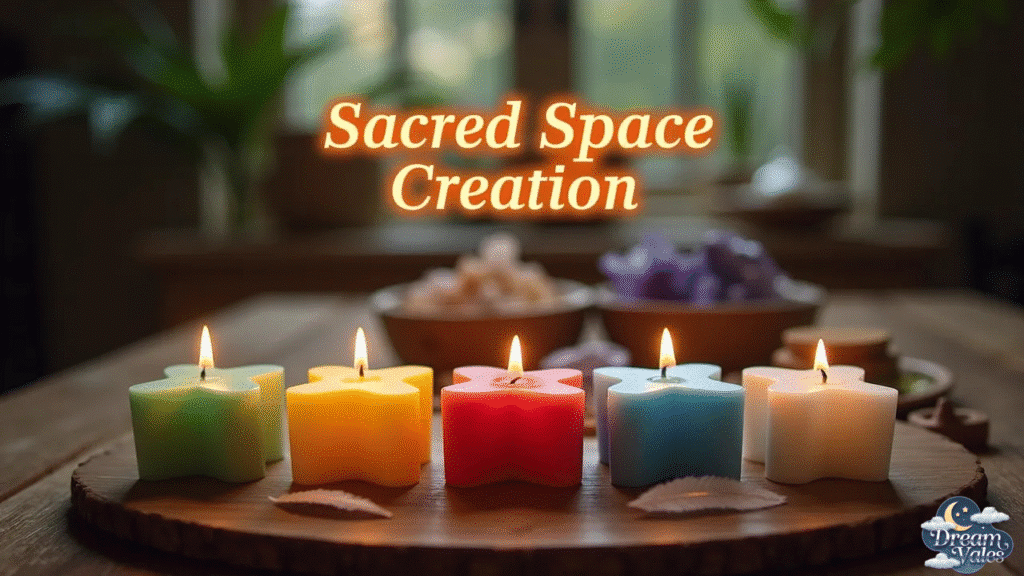
Meditation Techniques
Four-pointed star meditation begins with establishing your position within the four directions. Sit facing East to align with new beginnings and fresh perspectives on spiritual growth.
Visualize yourself at the center of a 4 pointed star with each point extending toward a cardinal direction. Breathe naturally while sensing the different energies flowing from each direction toward your center.
North brings stability and wisdom from elder teachings. East offers inspiration and new insights waiting to emerge.
South provides passion and energy for implementing changes, while West brings emotional clarity and intuitive understanding. This directional awareness creates balanced consciousness that integrates all aspects of experience.
The four-breath pattern synchronizes your physiology with directional energies. Inhale from East for new ideas, hold from South for integration, exhale to West for release, and pause in North for reflection.
Advanced practitioners develop the ability to sense directional energies without visual aids. This skill proves valuable during travel or in urban environments where natural direction markers aren’t visible.
You might find this interesting: Seeing 2 Rabbits Spiritual Meaning
Sacred Space Creation
Creating sacred space with four-pointed star symbolism transforms any environment into a place of spiritual practice. Begin by identifying the cardinal directions in your chosen space.
Place a candle at each directional point to represent the element associated with that direction. White candles work universally, though colored candles matching elemental correspondences enhance the energy.
Earth colors like brown or green belong in the North, while yellow or white candles represent Air in the East. Red or orange candles embody Fire in the South, with blue or silver candles symbolizing Water in the West.
| Direction | Candle Color | Elemental Item |
|---|---|---|
| North 🕯️ | Green/Brown | Crystals, stones |
| East 🕯️ | Yellow/White | Feathers, incense |
| South 🕯️ | Red/Orange | Matches, wand |
| West 🕯️ | Blue/Silver | Bowl of water |
| Center 🕯️ | Purple/Gold | Personal altar |
| Above 🕯️ | Clear/White | Hanging crystals |
| Below 🕯️ | Black/Brown | Grounding stones |
| Within 🕯️ | Rainbow | Personal items |
Seasonal decorations honoring the four-pointed star bring natural rhythms into your spiritual practice. Spring flowers in the East celebrate renewal, while summer fruits in the South honor growth and abundance.
Autumn leaves placed in the West acknowledge release and gratitude for harvested wisdom. Winter evergreens in the North provide stability and continuity through dormant periods.
Small indoor shrines can incorporate four-pointed star arrangements using crystals, shells, feathers, and other natural objects. These permanent installations maintain directional awareness throughout daily activities.
Daily Rituals
Morning intention setting using the 4 pointed star creates purposeful beginnings for each day. Stand facing East and state your intentions for new experiences and learning opportunities.
Turn to face South while expressing gratitude for the energy and passion you’ll bring to daily challenges. Face West to acknowledge emotions and relationships that need attention or healing.
Complete the circle by facing North to connect with wisdom and stability that will guide your decisions. Return to center with appreciation for the integration of all four aspects.
Evening gratitude practices reverse this pattern, beginning in the West with emotional processing of the day’s experiences. Move to North for wisdom gained, then East for tomorrow’s possibilities, and South for continued motivation.
These simple rituals require only a few minutes but create powerful frameworks for conscious living. Regular practice develops intuitive understanding of directional correspondences and their application to daily challenges.
Modern Spiritual Applications
Contemporary spiritual seekers adapt four-pointed star symbolism to address modern challenges while honoring ancient wisdom. These applications demonstrate the symbol’s continued relevance in digital age spirituality.
Crystal grid formations using four-pointed star patterns amplify the symbol’s balancing properties. Place a central stone surrounded by four others at cardinal points to create directional energy flow.
Clear quartz works excellently as the center stone, with direction-specific crystals at each point. Hematite grounds Northern energy, while citrine brightens Eastern inspiration.
Carnelian energizes Southern passion, and moonstone enhances Western intuition. These arrangements can remain in place for extended periods, providing ongoing energetic support for spiritual practice.
Yoga sequences honoring the four point star begin with Mountain Pose facing East. Move through Sun Salutations toward each direction, ending with Savasana at the center of your directional work.
The practice integrates physical movement with directional awareness, creating embodied understanding of the 4 pointed star spiritual meaning through direct experience rather than intellectual study alone.
| Yoga Pose | Direction | Spiritual Quality |
|---|---|---|
| Mountain 🏔️ | East | Grounding awareness |
| Warrior 1 ⚔️ | South | Confident action |
| Tree 🌳 | West | Balanced growth |
| Child’s Pose 🧘 | North | Humble wisdom |
| Sun Salutation ☀️ | Center | Integration |
| Eagle 🦅 | Above | Higher perspective |
| Corpse 💀 | Below | Deep rest |
| Lotus 🪷 | Within | Inner peace |
Digital age adaptations include smartphone apps that use GPS to identify cardinal directions for urban practitioners. These tools help maintain directional awareness in environments where natural markers aren’t visible.
Online meditation groups coordinate four-pointed star practices across time zones, with participants contributing energy from their local directions. This creates global energy grids that connect practitioners worldwide.
Social media platforms host communities dedicated to sharing 4 pointed star experiences and techniques. These virtual gatherings preserve traditional wisdom while adapting it for contemporary communication methods.
Related Star Symbolism Expanding Your Understanding
Understanding related star symbols deepens appreciation for the four-pointed star by revealing shared themes and distinct characteristics. These comparisons highlight the unique qualities that make each symbol valuable for different spiritual purposes.
Don’t miss our article on: Hearing Whistling at Night Spiritual Meaning
Five Pointed Star Pentagram
The five pointed star or pentagram represents human consciousness reaching toward spirit. Four points symbolize the elements, while the fifth point extending upward represents divine connection or the element of Spirit.
Historical controversy surrounding the pentagram stems from its association with both protective magic and darker practices. The symbol’s orientation determines its meaning – point up indicates spiritual aspiration, while point down suggests material focus.
Modern practitioners reclaim the pentagram as a symbol of personal wholeness and protection. The five points can represent the five senses, five elements, or five aspects of the divine feminine in various traditions.
Christian traditions historically used the pentagram to represent the five wounds of Christ. This sacred geometry appeared in medieval churches and illuminated manuscripts as a symbol of divine sacrifice and redemption.
Contemporary Wiccan and pagan traditions embrace the pentagram as a protective symbol that connects practitioners to elemental forces. Many wear pentagram jewelry or display it in homes for spiritual protection and energy balancing.
Eight Pointed Star Octagram
The eight pointed star or octagram represents regeneration and cosmic order through the doubling of four’s stability. This symbol appears in Islamic art as the Khatam representing the seal of creation.
Christian traditions incorporate the octagram as a symbol of regeneration and baptism. The eight points represent the seven days of creation plus the eternal day of rest in divine presence.
Buddhist and Hindu traditions use eight-pointed stars in mandala designs representing the Noble Eightfold Path or the eight aspects of Lakshmi’s abundance and prosperity.
| Eight-Pointed Tradition | Cultural Meaning | Spiritual Application |
|---|---|---|
| Islamic ☪️ | Seal of creation | Sacred geometry |
| Christian ✝️ | Regeneration | Baptismal symbolism |
| Buddhist ☸️ | Eightfold Path | Meditation practice |
| Hindu 🕉️ | Lakshmi’s aspects | Prosperity rituals |
| Celtic 🍀 | Wheel of Year | Seasonal celebrations |
| Norse ⚡ | Odin’s star | Runic magic |
| Native American 🦅 | Sacred directions | Medicine wheel |
| Babylonian 🏺 | Ishtar’s star | Goddess worship |
The octagram’s mathematical properties create perfect symmetry that appeals to practitioners seeking cosmic harmony. Its eight-fold division allows for more nuanced directional work than the simpler four-pointed approach.
Modern practitioners often progress from four-pointed star work to eight-pointed applications as their understanding deepens. The additional points provide expanded framework for complex spiritual operations.
Architectural applications of eight-pointed stars appear in sacred buildings worldwide. These designs create energetic focal points that enhance the spiritual atmosphere of religious and meditation spaces.
Atmospheric and Ritual Tools
Practical tools enhance four-pointed star spiritual work by providing tangible focus points for energy and intention. These implements bridge the gap between abstract symbolism and embodied practice.
Light Work
Atmospheric light pentagram phenomena occur when light refracts through specific atmospheric conditions creating natural five-pointed star patterns. These rare occurrences inspire spiritual practitioners seeking signs from natural world.
Candle arrangements using four-pointed star patterns create powerful focal points for meditation and ritual work. Place candles at cardinal directions with optional additional candles at intercardinal points for eight-pointed formations.
LED lights offer modern alternatives for practitioners concerned about fire safety or living in spaces where open flames aren’t permitted. Battery-operated candles maintain the visual symbolism while eliminating fire risks.
Solar-powered garden lights arranged in four-pointed patterns bring the symbol’s energy to outdoor meditation spaces. These lights charge during daylight hours and provide gentle illumination for evening practice.
Indoor lighting arrangements can incorporate colored bulbs matching directional correspondences. Red or orange lights in the South, blue or white in the North, yellow or clear in the East, and soft blue or purple in the West.
Laser light projectors create precise four-pointed star patterns on walls or ceilings for meditation focus. These technological tools provide consistent visual anchors that adapt to various room configurations.
Incense Practices
Incense plank pentagram refers to the practice of arranging five incense sticks in pentagram formation for ritual purification. This creates aromatic sacred space while honoring five-element symbolism.
Four-pointed incense arrangements use sticks placed at cardinal directions with a central holder for integration. Each direction can feature different scents corresponding to elemental associations.
Frankincense works well for Eastern air energy, while cinnamon or dragon’s blood enhances Southern fire energy. Sandalwood or cedar connect with Western water energy, and patchouli or vetiver ground Northern earth energy.
Sage bundles burned while walking the four directions cleanse space energetically. Begin in the East and move clockwise through South, West, and North before returning to center for completion.
Essential oil diffusers placed at cardinal points create subtle aromatic environments for four-pointed star work. Blend oils according to directional correspondences or use single scents that resonate with specific intentions.
Resin burning on charcoal provides traditional aromatic experiences that connect modern practitioners to ancient methods. Copal, frankincense, and myrrh create sacred atmospheres suitable for deep spiritual work.
Frequently Asked Questions
Common questions about four-pointed star symbolism reveal the aspects of this symbol that most intrigue spiritual seekers. These inquiries help clarify practical applications and deeper meanings.
What does the 4 point star symbolize?
The 4 point star symbolizes balance, stability, and integration of fundamental life forces. It represents the four cardinal directions, classical elements, and aspects of human experience working in harmony.
This symbol appears across cultures because it addresses universal human needs for grounding, inspiration, passion, and emotional wisdom. The four points create natural equilibrium that resonates with psychological needs for order and understanding.
What does 4 stars mean?
4 stars together amplify the individual star’s meaning while creating additional layers of significance. They might represent completion of a cycle, mastery of elemental forces, or achievement of balanced spiritual development.
In divination systems, four stars appearing together often indicate major life transitions requiring integration of different aspects of experience. The pattern suggests successful navigation of challenges through balanced application of wisdom, energy, emotion, and practical skills.
Multiple four-pointed stars in dreams or meditation indicate readiness for advanced spiritual work. The repetition emphasizes the importance of maintaining balance while pursuing growth and transformation.
Why do stars have 4 points?
Stars naturally appear with four points due to diffraction effects in our eyes and telescopes. The perpendicular lines of light create cross-shaped patterns that our vision interprets as four-pointed formations.
However, spiritual traditions focus on symbolic rather than astronomical explanations. The four point star represents fundamental organizing principles that govern natural and spiritual worlds through directional and elemental correspondences.
Ancient observers noted four-pointed star patterns in celestial phenomena and incorporated these observations into spiritual systems. The symbol bridges observable nature with inner spiritual experience through shared structural principles.
What does a star represent spiritually?
Stars represent divine guidance, aspiration toward higher consciousness, and connection between earthly and celestial realms. They symbolize hope, wishes, destiny, and the human soul’s journey toward enlightenment.
The 4 pointed star spiritual meaning specifically emphasizes grounded spirituality that integrates material and spiritual concerns. Unlike other star symbols that might focus on transcendence, four-pointed stars honor earthly experience as part of spiritual development.
Different star configurations carry distinct meanings. Five-pointed stars emphasize human potential and protection, while eight-pointed stars represent regeneration and cosmic cycles.
The four-pointed star uniquely balances these concerns through elemental and directional symbolism. This makes it particularly valuable for practitioners seeking holistic spiritual development that honors both worldly responsibilities and transcendent aspirations.
Embracing the Wisdom of the 4 Pointed Star
The 4 pointed star offers practical wisdom for modern spiritual seekers navigating complex contemporary challenges. Its emphasis on balance provides stability in an increasingly chaotic world.
Unlike symbols requiring extensive study or cultural initiation, the four point star meaning speaks directly to universal human experiences. Everyone understands the need for stability, inspiration, passion, and emotional clarity in their lives.
Integration of 4 pointed star spiritual meaning doesn’t require abandoning existing beliefs or practices. The symbol enhances rather than replaces other spiritual tools by providing a framework for balanced development.
Regular practice with four-pointed symbolism develops intuitive understanding that transcends intellectual knowledge. The symbol becomes a lived experience rather than merely a concept to contemplate.
Your journey with the four-pointed star begins with simple awareness of directional and elemental correspondences in daily life. Notice how different times of day, seasons, and life circumstances align with the four-fold pattern this ancient symbol represents.
Whether you’re drawn to meditation, ritual practice, or simply wearing 4 pointed star jewelry as a reminder, this symbol offers profound wisdom for anyone seeking greater balance and spiritual integration.
The enduring appeal of the four-pointed star across cultures and centuries testifies to its fundamental relevance to human spiritual needs. By understanding and working with this symbol, you connect with an unbroken chain of wisdom that spans millennia.
Contemporary applications demonstrate the symbol’s continued vitality in addressing modern challenges through ancient insight. The 4 pointed star bridges traditional wisdom with contemporary needs, creating a path forward that honors both heritage and innovation.

